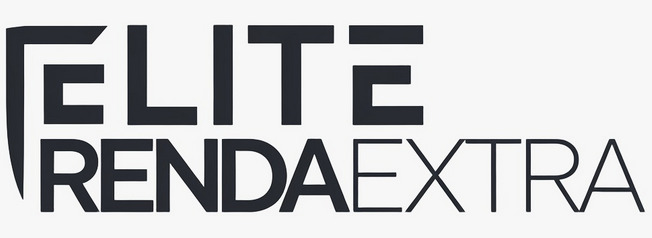Navigating the world of personal finance can feel complex, especially when you need access to funds for significant expenses or opportunities. Many individuals across the United States find themselves exploring various borrowing options at different points in their lives, whether for planned projects or unexpected situations.
Among the financial tools available, personal loans stand out for their versatility. Understanding how they work, what options exist, and how to evaluate them is a crucial step towards making sound financial decisions that align with your individual circumstances and goals within the US financial landscape.
Understanding Personal Loans in the US
So, what exactly is a personal loan? At its core, a personal loan is a type of installment credit provided by financial institutions like banks, credit unions, or online lenders. Unlike mortgages (secured by property) or auto loans (secured by a vehicle), most personal loans are unsecured. This means they don’t typically require collateral – an asset the lender can seize if you fail to repay the loan.
Because they are often unsecured, lenders place significant emphasis on your creditworthiness – your history of managing debt – when deciding whether to approve your application and what interest rate to offer. Borrowers repay the loan amount, plus interest and any applicable fees, in fixed monthly payments over a predetermined period, usually ranging from one to seven years.
Common Reasons Americans Seek Personal Loans
The flexibility of personal loans makes them suitable for a wide array of purposes. People in the United States often turn to personal loans to manage various financial situations. Some common uses include:
- Debt Consolidation: Combining multiple high-interest debts (like credit cards) into a single loan, potentially with a lower interest rate and a more manageable single monthly payment.
- Home Improvements: Funding renovations, repairs, or upgrades to a property without tapping into home equity.
- Major Purchases: Covering the cost of significant items like appliances, furniture, or even contributing towards vehicle purchases when other financing isn’t ideal.
- Unexpected Expenses: Handling unforeseen costs such as large medical bills, emergency home repairs, or urgent travel needs.
- Life Events: Financing significant occasions like weddings, moving expenses, or adoption costs.
- Starting a Small Business: While dedicated business loans exist, some entrepreneurs use personal loans for initial seed money, especially if the required amount is relatively small.
It’s important to use personal loans responsibly, ensuring the purpose aligns with your long-term financial health and repayment capacity.
Types of Personal Loans Available
While the general concept is straightforward, personal loans come in different forms. Understanding these distinctions is key when searching for top personal loan options.
Unsecured vs. Secured Personal Loans
As mentioned, most personal loans are unsecured. Approval and terms heavily depend on your credit score, income, and overall credit history. They represent a higher risk for lenders, which can sometimes translate to slightly higher interest rates compared to secured options.
Secured personal loans, conversely, require you to pledge an asset as collateral. This could be a savings account, a certificate of deposit (CD), or sometimes even a vehicle. Because the lender has collateral to recover losses if you default, these loans might be easier to qualify for, especially for borrowers with less-than-perfect credit, and may come with lower interest rates. However, you risk losing the asset if you cannot meet the repayment obligations.
Fixed-Rate vs. Variable-Rate Personal Loans
The vast majority of personal loans offered in the US have a fixed interest rate. This means your interest rate – and therefore your monthly payment – remains the same throughout the entire life of the loan. This predictability makes budgeting easier and protects you from potential interest rate hikes in the market.
Less common are variable-rate personal loans. With these, the interest rate can fluctuate over the loan term based on changes in a benchmark index rate (like the Prime Rate). While they might start with a lower initial rate than fixed-rate loans, your payments could increase if market rates go up, introducing an element of uncertainty.
Key Factors When Comparing Personal Loan Options
Finding the right personal loan involves more than just looking at the advertised interest rate. Several elements play a crucial role in determining the true cost and suitability of a loan offer.
Annual Percentage Rate (APR)
The APR is arguably the most critical factor. It represents the total annual cost of borrowing, expressed as a percentage. Importantly, APR includes not only the interest rate but also most mandatory fees associated with the loan (like origination fees). Comparing APRs from different lenders provides a more accurate picture of the overall cost than looking at interest rates alone.
Loan Amounts
Lenders have minimum and maximum loan amounts they offer. Ensure the lenders you’re considering provide loans within the range you need. Borrowing too little might not solve your problem, while borrowing more than necessary increases your overall cost.
Repayment Terms
This refers to the length of time you have to repay the loan, typically expressed in months or years. Shorter terms usually mean higher monthly payments but less total interest paid over the life of the loan. Longer terms result in lower monthly payments but significantly more interest paid overall. Choose a term that results in a monthly payment you can comfortably afford while minimizing the total interest cost.
Fees and Penalties
Be vigilant about potential fees. Common ones include:
- Origination Fee: A fee charged by some lenders for processing the loan application, often deducted directly from the loan proceeds. It’s usually a percentage of the loan amount.
- Late Payment Fee: A penalty charged if you miss a payment due date.
- Prepayment Penalty: Some lenders charge a fee if you pay off your loan early. Many personal loans, especially from reputable online lenders and banks, do not have prepayment penalties, which is a borrower-friendly feature.
- Insufficient Funds (NSF) Fee: Charged if an automated payment fails due to lack of funds in your account.
Always read the loan agreement carefully to understand all potential fees.
Lender Reputation and Customer Service
Consider the lender’s reputation. Look for reviews and ratings from past borrowers on independent websites. Assess their customer service responsiveness and accessibility. Dealing with a reputable lender with good support can make the borrowing experience much smoother.
Eligibility Requirements
Lenders have specific criteria potential borrowers must meet. These often include:
- Minimum Credit Score: While requirements vary widely, a higher credit score generally qualifies you for better terms and lower APRs.
- Income Requirements: Lenders need to see proof of stable income sufficient to cover the loan payments alongside your other financial obligations (debt-to-income ratio).
- Employment History: Stable employment can positively influence a lender’s decision.
- Citizenship/Residency: You typically need to be a US citizen or permanent resident and reside in a state where the lender operates.
Checking these requirements beforehand can save you time applying for loans you’re unlikely to qualify for.
The Importance of Your Credit Score
Your credit score is a three-digit number that summarizes your credit history and predicts your likelihood of repaying borrowed money. Lenders in the United States rely heavily on credit scores (like FICO or VantageScore) to assess risk.
A good to excellent credit score (typically 670 and above) significantly increases your chances of approval for personal loans and helps you secure the most favorable interest rates and terms. Borrowers with fair or poor credit may still find options, but often face higher APRs or may need to consider secured loans or co-signers. Knowing your credit score before you start searching for loans gives you a realistic expectation of the types of offers you might receive.
Navigating the Personal Loan Application Process
While specifics vary by lender, the general process often looks like this:
- Pre-qualification: Many lenders, especially online ones, offer a pre-qualification process. This involves providing basic financial information (income, housing costs, desired loan amount) to get an estimate of potential loan offers and rates. This step usually involves a ‘soft’ credit check, which does not impact your credit score.
- Formal Application: If you decide to proceed after pre-qualification, you’ll submit a formal application. This requires more detailed information and documentation, such as proof of income (pay stubs, tax returns), proof of identity (driver’s license, passport), and bank account details. This stage typically involves a ‘hard’ credit inquiry, which can slightly lower your score temporarily.
- Verification: The lender verifies the information you provided. They may ask for additional documentation.
- Approval and Offer: If approved, the lender presents a formal loan offer detailing the amount, APR, repayment term, monthly payment, and all associated fees. Review this document meticulously.
- Funding: If you accept the offer, you’ll sign the loan agreement electronically or physically. The funds are then typically disbursed directly into your bank account, sometimes as quickly as the next business day.
Where to Find Personal Loan Options in the US
Several types of institutions offer personal loans:
Banks
Traditional banks (large national chains and smaller community banks) often offer personal loans, particularly to existing customers with good credit history. They may offer competitive rates and the convenience of managing your loan alongside other accounts. However, their application processes can sometimes be more stringent or slower than online lenders.
Credit Unions
Credit unions are non-profit, member-owned financial cooperatives. They often provide personal loans with potentially lower APRs and more flexible terms than banks, especially for members. You typically need to meet membership criteria (based on location, employer, affiliation, etc.) to join and apply for a loan.
Online Lenders
The rise of fintech has led to numerous online-only lenders specializing in personal loans. They often feature quick application processes, fast funding times, and competitive rates, particularly for borrowers across the credit spectrum. Many offer user-friendly online platforms and robust pre-qualification tools. It’s essential to verify the legitimacy and reputation of online lenders.
Tips for Effectively Searching for Options
Finding the best personal loan requires careful comparison.
- Check Your Credit: Know your credit score and review your credit report for errors before applying.
- Utilize Pre-qualification: Take advantage of pre-qualification tools offered by multiple lenders. Since these use soft inquiries, you can compare potential rates without hurting your credit score.
- Compare APRs, Not Just Interest Rates: Always focus on the APR for an accurate cost comparison.
- Read the Fine Print: Understand all terms, conditions, fees, and penalties before accepting any loan offer.
- Consider the Lender Type: Weigh the pros and cons of banks, credit unions, and online lenders based on your needs and preferences.
- Borrow Only What You Need: Resist the temptation to borrow more than necessary, as this increases your debt burden and total interest paid.
Making an Informed Decision
Choosing a personal loan is a significant financial commitment. By understanding the different types of loans, thoroughly researching the key factors like APR and fees, knowing your credit standing, and comparing offers from various reputable sources like banks, credit unions, and online lenders, you empower yourself. Taking the time to explore the available personal loan options in the US landscape allows you to select a solution that best fits your financial situation and helps you achieve your goals responsibly.



